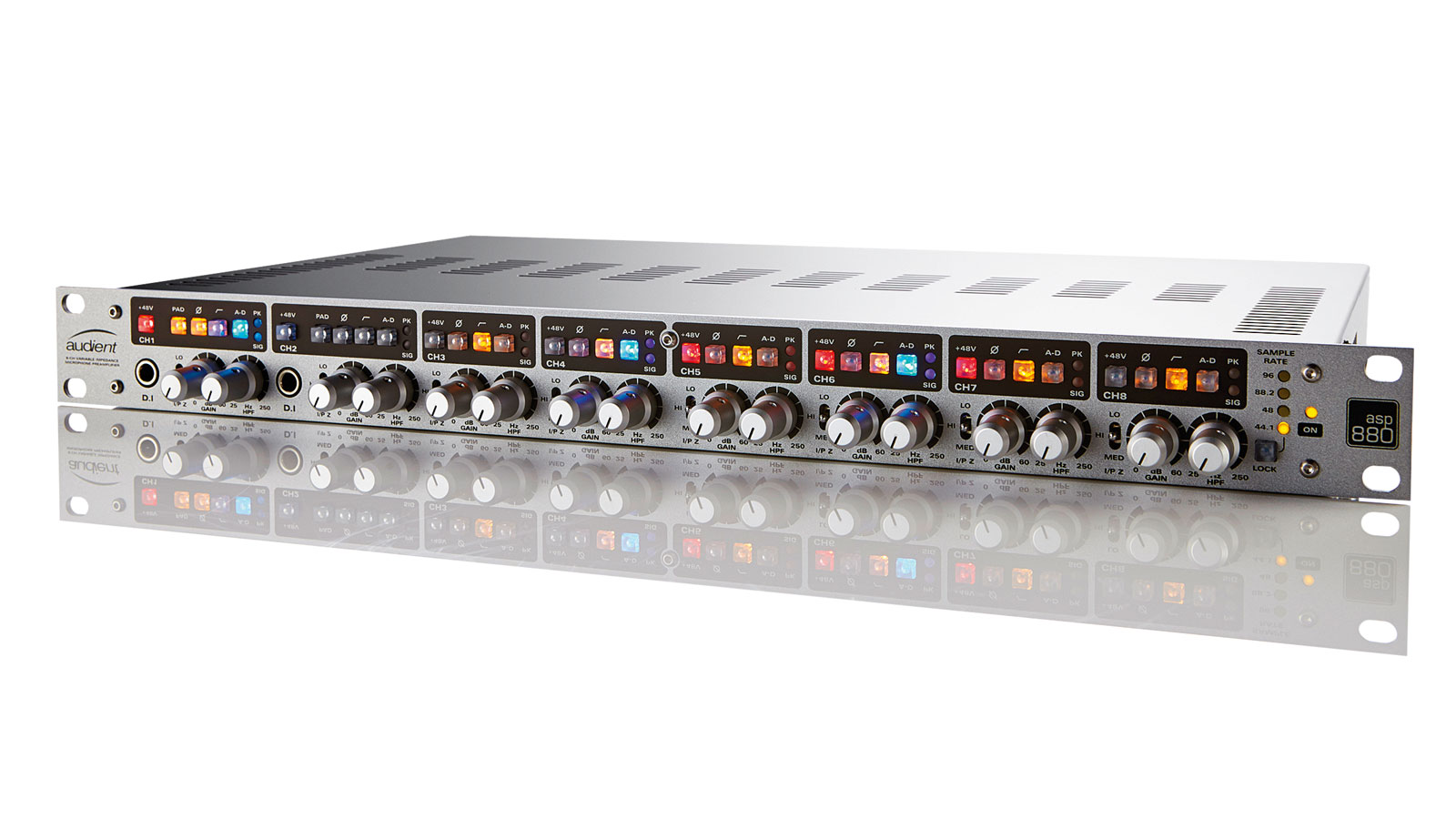MusicRadar Verdict
An extremely flexible, high-quality mic pre and converter unit with a functionality well beyond its price.
Pros
- +
Excellent build and sound quality. Variable impedance inputs provide tonal variations from microphone sources. Can be used as a standalone ADC.
Cons
- -
There's not much to moan about, given the price point.
MusicRadar's got your back
Audient has a well-earned reputation as a high-quality console manufacturer. The audio circuitry in the ASP880 comes directly from its flagship analogue consoles and benefits from chief designer, Dave Dearden's many years of research into high-quality and cost effective audio design.
"The unit is beautifully constructed with a solid feel"
The unit is beautifully constructed with a solid feel and the metal rotary controls have a positive and smooth operation. The front panel layout means the many knobs and switches are accessible without being cluttered. They are unlikely to impinge on each others' operation - with the exception of the three-position impedance toggle switch. This however, isn't an issue as you need to set it before making final adjustments to the gain knob that it is closest to.
As you will see from the photograph, the first two channels feature an extra jack socket for instrument DI. This uses JFET transistors and has a very high 1M Ohm input impedance. JFETs are known for their sweet tone and are often used in guitar pedals while many classic valve guitar amps have a 1M Ohm input impedance.
The result is a DI input that perfectly suits electric guitar and bass, providing a full tone with just a touch of colour. Perfect for those that like to use amp simulations or a range of plugs to get their favourite sounds.
Magic button
All eight inputs have a dual XLR and 1/4-inch TRS socket on the back panel and every channel has switches for phantom power (+48v), phase reverse, high-pass filter and A/D.
The high-pass filter operates from 25Hz to 250Hz, set using the right-hand of each pair of rotary controls. It's a 12dB per octave filter and is smooth and musical allowing you to tailor the low-end response of an instrument or voice as well as removing unwanted low-frequency noise.
The A/D button is a useful refinement as it serves two purposes. On the rear panel are two 25-way D-sub (Tascam protocol) connectors. These provide eight analogue send and return points, which are post the mic preamp and pre the A/D converter. Here is where you can insert compression and EQ or, if you have other external mic pres, use the return to feed the A/D convertor. Think of it as a dual insert and standalone A/D switch.
"At this price, you would expect compromise but it handles each one of its functions with excellent sonic quality"
The input impedance switch is a bit of a magic button. Any mic, be it a condenser, ribbon or dynamic, that has a transformer output stage will be sensitive to input impedance, and by varying it you subtly affect the transient and frequency response of the mic.
That extra bit of tonal control means that you can get closer to the sound you want before using compression and EQ and it broadens the range of sounds available to you - particularly useful if you have a limited number of microphones in your collection.
Excellent quality
The Burr-Brown ADC is of very high quality with a clean transparent sound and plenty of headroom. It outputs to ADAT light pipe (single out for 48kHz) or AES/ S-PDIF (via a 9-pin D-sub); you also have an external clock input via a properly terminated BNC connector.
So you can run the ASP880 as a master clock source or easily incorporate it into a bigger set-up with a master clock generator. Clock rate is set via a front panel switch and goes from 44.1kHz to 96kHz.
So, it's an eight-channel mic pre, an eight-channel line pre, a two-channel DI source and a standalone ADC. At this price, you would expect some kind of compromise but it handles each one of its functions with excellent sonic quality. With this kind of build quality it will compete happily in the high-end market too. An excellent unit which will add extra flexibility and quality to any set-up.
“A synthesizer that is both easy to use and fun to play whilst maintaining a decent degree of programming depth and flexibility”: PWM Mantis review
“I feel like that song had everything we needed to come back with”: Bring Me The Horizon’s Lee Malia on Shadow Moses, its riff and the secrets behind its tone, and why it was the right anthem at the right time
“I said, ‘Are we sure we can write a song about death?’”: The story of Mike + The Mechanics' classic No.1 The Living Years










